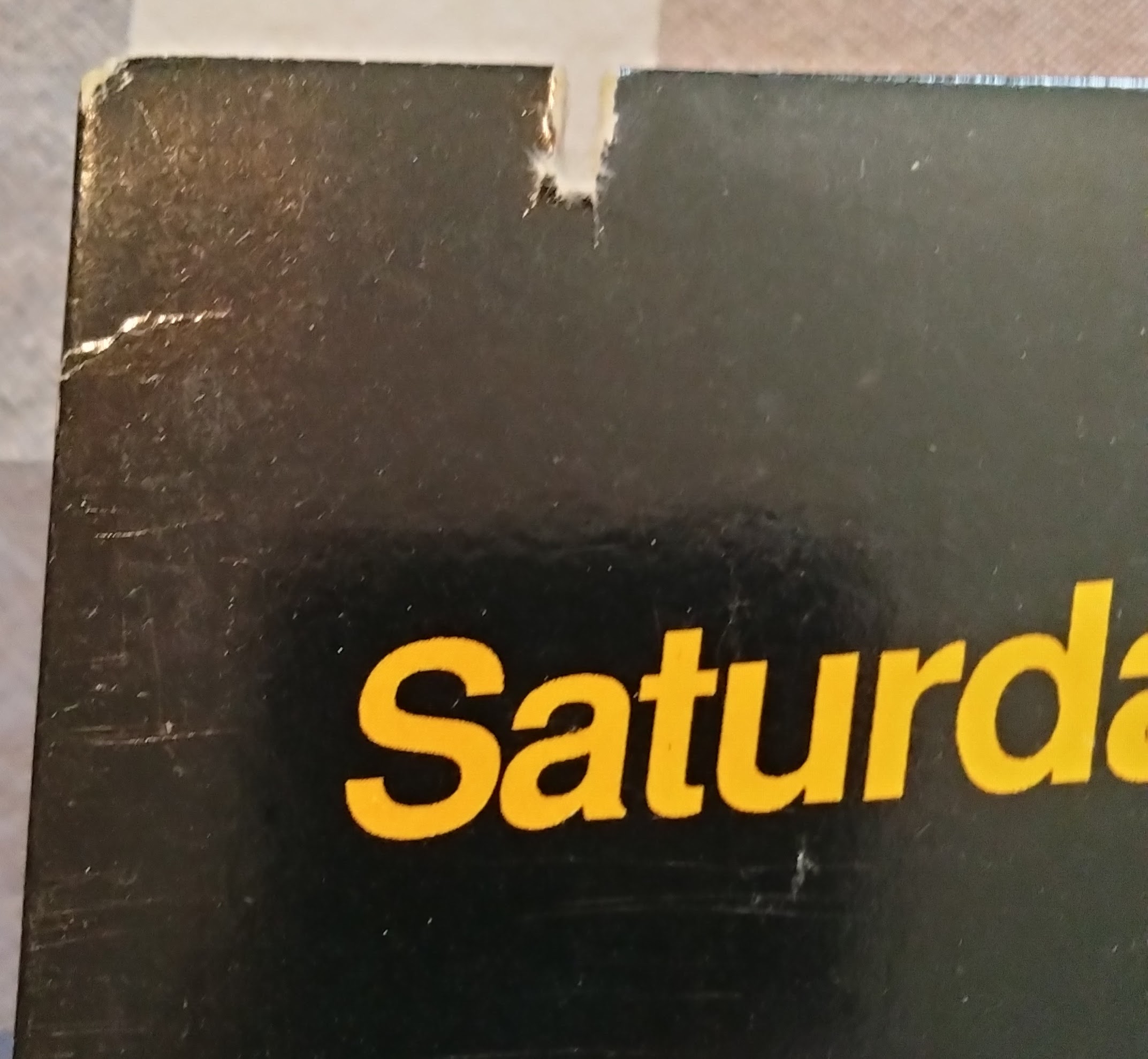
The Beastie Boys and Me
Published on Dec 10, 2025
The Doors and Me
Published on Dec 8, 2025
Hold the Line: a breakup story starring Toto
Published on Dec 3, 2025
Letter From the Publisher
Published on Nov 29, 2025
More Liner Notes…
Featured Essay: The Cut-Out Bin
by Joe Corey III

When my family moved to Cary, North Carolina in the Fall of 1978, the town’s indoor shopping mall was on the verge of happening. There were a lot of people guessing what kind of stores would be inside. The one thing that seemed certain is that a Record Bar would be part of the mix. Every serious indoor mall in the area had a Record Bar (the chain was based in the area). When the Cary Village Mall opened the next year, we were shocked to see that there was no Record Bar in the triangular shaped building. Why did they skip our mall over while they were at North Hills, Crabtree and even Cameron Village? Instead there stood a Camelot Music. It felt like a betrayal to the junior high version of myself.
That feeling changed once I crossed the threshold into Camelot Music. It was pretty much like a Record Bar with a different color scheme and logo. They charged the same mall prices for the hottest albums of the time which included Billy Joel, Billy Thorpe and The Blues Brothers. There was one big difference between the two stores. Camelot Music had a section of bins near the far right wall with albums priced at $2 or $1 which was a major discount compared to $5.99 for a new record. What I didn’t understand at the time was that they weren’t just random new records placed in these bins with a great sale price. Very quickly, I learned that the hot titles were not in this section. There were no Beatles, Rolling Stones, Led Zeppelin or Van Halen lurking in the bins. There were a lot of albums by acts that I had never heard on the radio. Quite a few were from band members that had gone solo and became obscure. Once I found early Journey records, but put them back since they didn’t feature Steve Perry. I kept flipping away hoping to find a nugget amongst the hundreds of duds. What was the deal with these cheaply priced albums?
I would later learn they were remainder records dumped by record labels since the albums were overpressed and undersold. They all had a notch sliced near the corner of the record jacket. This is why the remainder section was nicknamed The Cut Out Bin. Whenever mom dumped me off at the mall during my high school years, this would be my first destination to see if something of worth had made it into the pile. Thanks to this section, I spent more time browsing in Camelot Music than I did on my visits to Record Bar stores at those other malls.
Over the next few years I’d find quite a few decent records with a notch. This included a duo from Queen from when they became uncool after The Game exploded. First was their soundtrack to Flash Gordon. The other was Jazz which still had the poster of a bike race featuring nudist female bicyclists. I was shocked they didn’t ask for my driver’s license when I gave them the buck and change. I was able to appreciate Todd Rundgren and his group Utopia through remainders. I snagged notched copies of Utopia’s Swing To The Right and Deface The Music and Todd’s Back To The Bars live album. Solo records from The Who popped up. I got lucky and once found a copy of Pete Townshend’s Empty Glass in the bin. I thought the record sold rather well. Later I’d snag Roger Daltrey’s soundtrack to McVicar which was my favorite of his solo albums. It helped that The Who played on a few tracks. Bassist John Entwistle’s Too Late The Hero was worth two bucks for the Joe Walsh guitar solos.

There were two records that always seemed to be lurking in the bins: Neil Young and Crazy Horse’s Re·ac·tor and Yes’ Tormato. Beyond Camelot Music other stores got into remainders. During this time, I dug through cut out bins from Building #19 to a Wolworth’s and would always find a dozen copies of Re·ac·tor. This must have been the first cut-out album to have returned to the warehouse platinum before they hit it with the band saw and shipped them back. Yes’ Tormato is best known for the smashed tomato on the original cover art. The album wasn’t quite up to their best, but it wasn’t worth pelting with rotten produce. On the other hand, one afternoon I found a copy of Emerson Lake and Palmer’s Love Beach with a giant 50 cent sticker on it. I eagerly took the vinyl home and played it. This was the only time I ever put a needle in the groove. I felt robbed of my 50 cents.
As labels phased out vinyl releases in the late ‘80s and early ‘90s, the cut-out bin at Camelot Music kept up with the changes. I remember the first cut-out compact disc was the soundtrack to Youngblood (the movie starred Rob Lowe as a hockey player). The notched longbox was six bucks which was three times more expensive than the vinyl offerings at the time. Too rich for my young blood. Eventually the remainder section was taken over by compact discs as records were phased out. During the early ‘90s, cut-out laserdiscs appeared in the Camelot Music bins which felt like vinyl had returned as I flipped through the covers for Traci Lords erotic thrillers.
Ultimately the digital age took away the pleasure of browsing the remainder bin. Where are you supposed to put a notch to create a cut out MP3 album?
Joe Corey III is the mastermind behind the Casino Audiophiles and an ex-member of The Eskimo Sisters. He created the series Danger! Health Films that stars Randy Jones, the Original Cowboy from the Village People and Doug McMillan of The Connells that is on NightFlight Streaming. He sometimes produces the Oakmoon Orchard Record Crates that sell at the School Kids Records in Raleigh, North Carolina. He currently writes home video reviews for InsidePulse.

